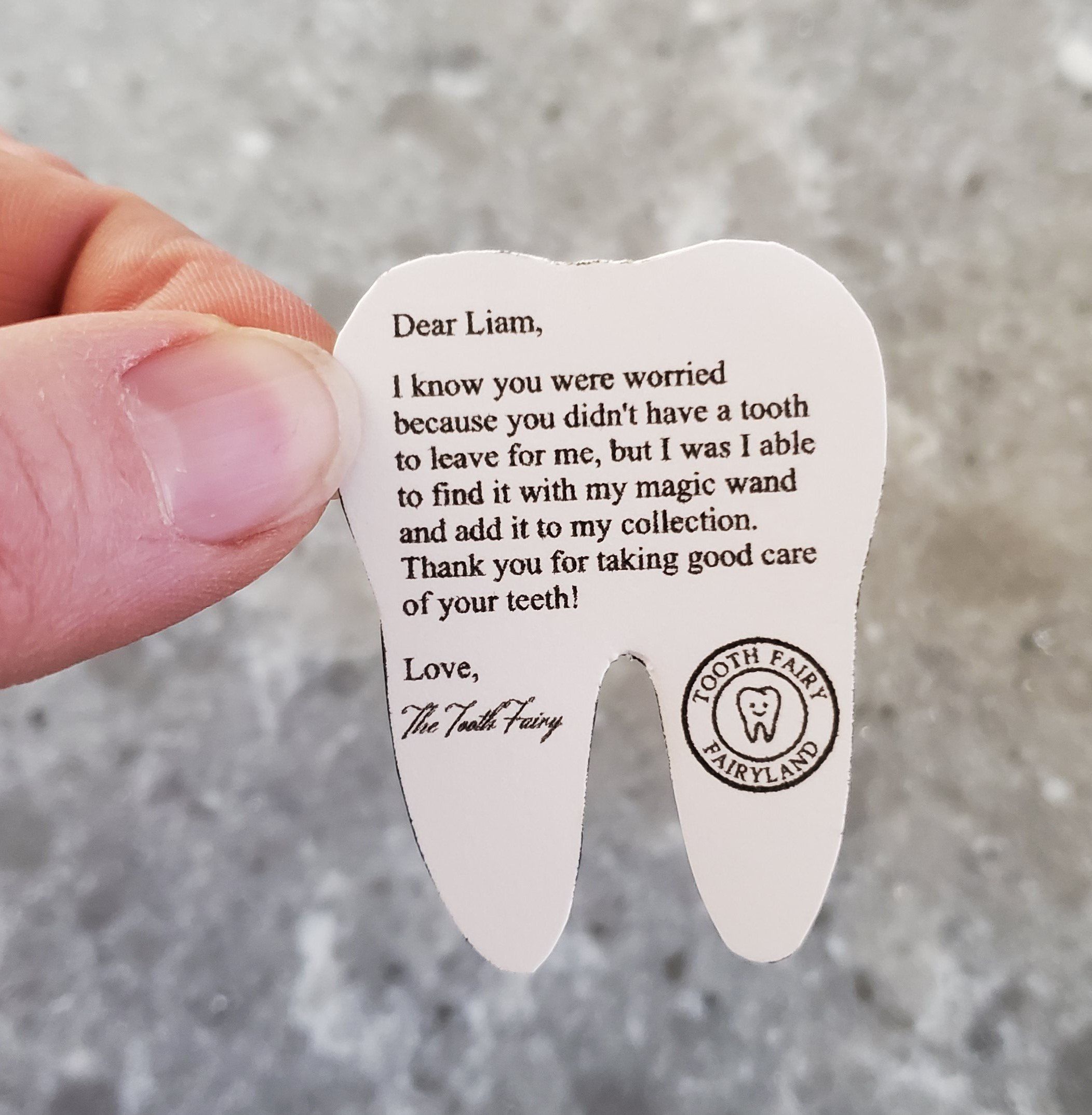Tooth Fairy Last Visit

The tooth fairy’s last visit is a significant milestone in a child’s life, marking the end of an era of lost teeth and magical visits from this mythical figure. For most children, the experience of losing a tooth and receiving a visit from the tooth fairy is a thrilling and memorable part of growing up. The tradition of the tooth fairy is believed to have originated in the United States in the early 20th century, with the idea being that a fairy would exchange gifts for children’s teeth that had fallen out.
As children grow older, they eventually lose all of their baby teeth, which are then replaced by permanent ones. The last tooth to fall out is often a significant event, as it signals the end of the tooth fairy’s visits and the transition to adulthood. This milestone can be a bittersweet moment for both children and parents, as it marks the end of a period of childhood innocence and the beginning of a new phase of growth and development.
The concept of the tooth fairy has evolved over time, with various cultural and societal influences shaping the tradition. In some countries, the tooth fairy is known as “La Petite Souris” or “Ratoncito Pérez,” and the tradition involves leaving a small gift or treat in exchange for the tooth. The idea behind the tooth fairy is to make the experience of losing a tooth a positive and exciting one, rather than a scary or uncomfortable one.
One of the most significant aspects of the tooth fairy’s last visit is the emotional impact it can have on children. For many kids, the tooth fairy represents a sense of magic and wonder, and the end of these visits can be a sad and nostalgic moment. Parents can play an important role in making this transition easier for their children, by creating special memories and traditions around the last tooth to fall out.
In terms of how to handle the tooth fairy’s last visit, there are several approaches that parents can take. One idea is to create a special ritual or ceremony to mark the occasion, such as taking a photo with the tooth fairy or creating a special keepsake box to store the tooth. Another approach is to have a conversation with the child about the significance of this milestone, and to reassure them that they are growing up and becoming more independent.
It’s also important to consider the financial aspect of the tooth fairy’s last visit. The amount of money left by the tooth fairy can vary greatly, depending on the family’s cultural and socioeconomic background. Some parents choose to leave a small amount of money, such as 1 or 5, while others may leave a larger sum, such as 10 or 20. Ultimately, the amount of money left by the tooth fairy is less important than the thought and effort that goes into making the experience special and meaningful for the child.
In addition to the emotional and financial aspects of the tooth fairy’s last visit, there are also practical considerations to keep in mind. For example, parents may need to consider how to store the tooth and any associated mementos, such as a tooth fairy certificate or a special keepsake box. They may also need to think about how to explain the concept of the tooth fairy to younger siblings or other family members, who may not yet understand the tradition.
To make the tooth fairy’s last visit even more special, parents can consider adding some personalized touches to the experience. For example, they could create a customized tooth fairy certificate, complete with the child’s name and the date of the last tooth to fall out. They could also leave a small gift or treat, such as a special toy or a favorite snack, to make the experience more enjoyable and memorable.
In conclusion, the tooth fairy’s last visit is a significant milestone in a child’s life, marking the end of an era of lost teeth and magical visits from this mythical figure. By creating special memories and traditions around this occasion, parents can make the experience more enjoyable and meaningful for their children, and help them to transition smoothly into adulthood.
What is the average age of children when they lose their last baby tooth?
+The average age of children when they lose their last baby tooth is around 12-13 years old, although this can vary depending on factors such as genetics and overall health.
How much money should I leave for my child’s last tooth?
+The amount of money to leave for a child’s last tooth can vary depending on the family’s cultural and socioeconomic background. Some parents choose to leave a small amount, such as 1 or 5, while others may leave a larger sum, such as 10 or 20.
How can I make my child’s last tooth fairy visit special and memorable?
+There are several ways to make a child’s last tooth fairy visit special and memorable, such as creating a customized tooth fairy certificate, leaving a small gift or treat, or taking a photo with the tooth fairy. Parents can also consider having a conversation with the child about the significance of this milestone and reassuring them that they are growing up and becoming more independent.

